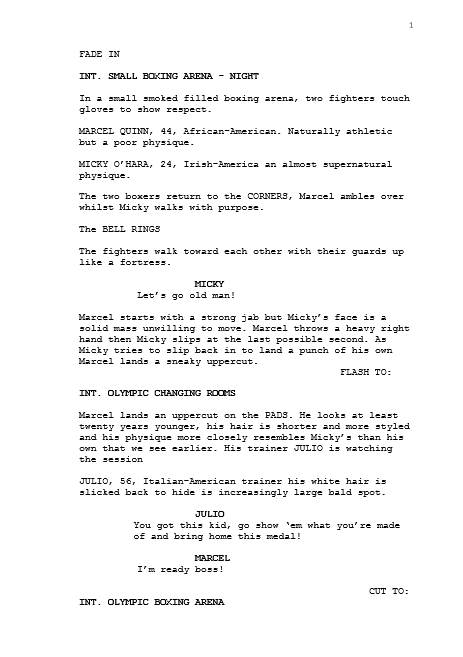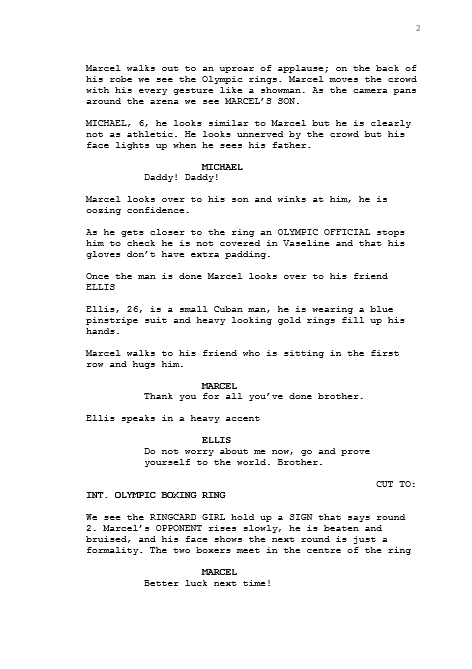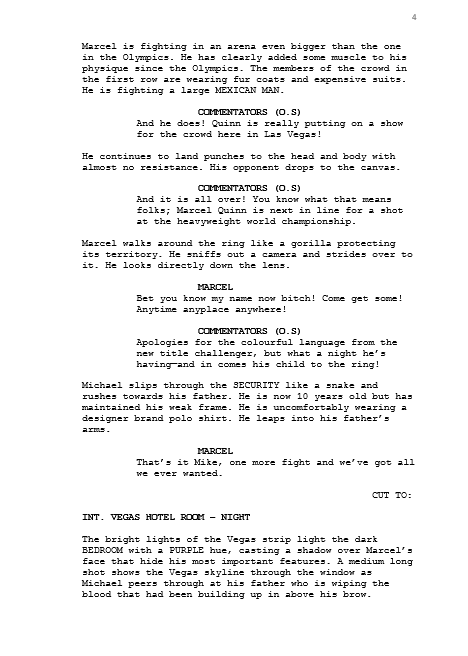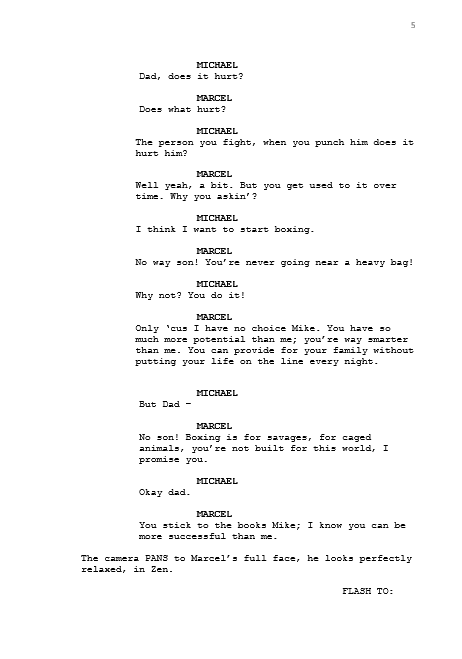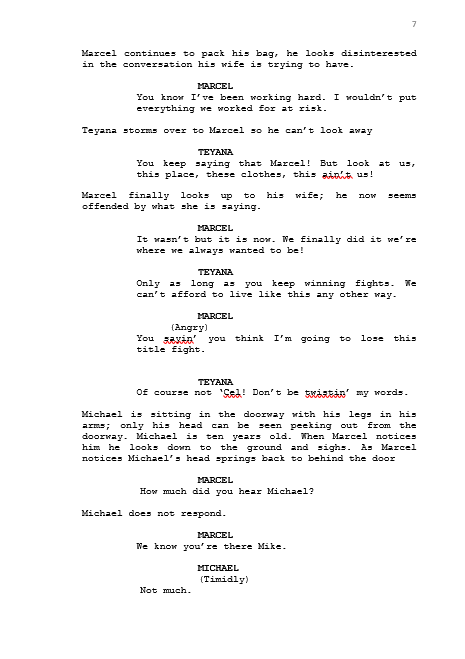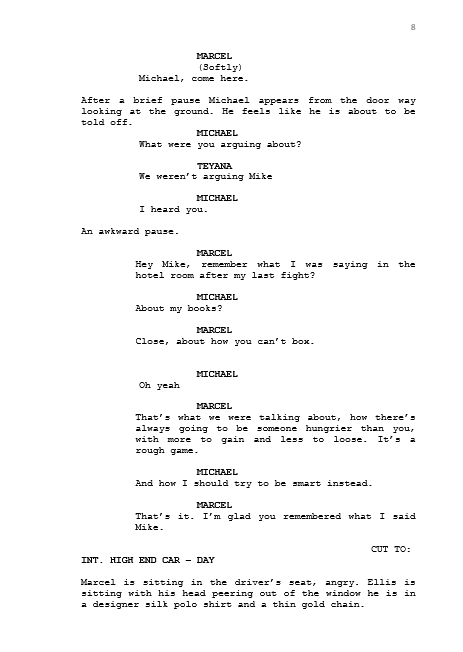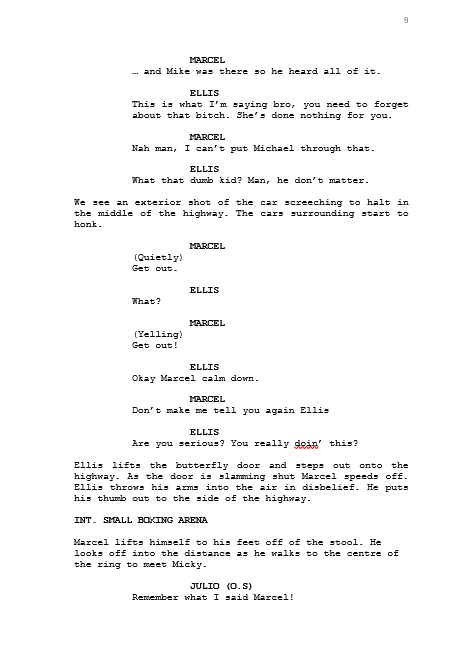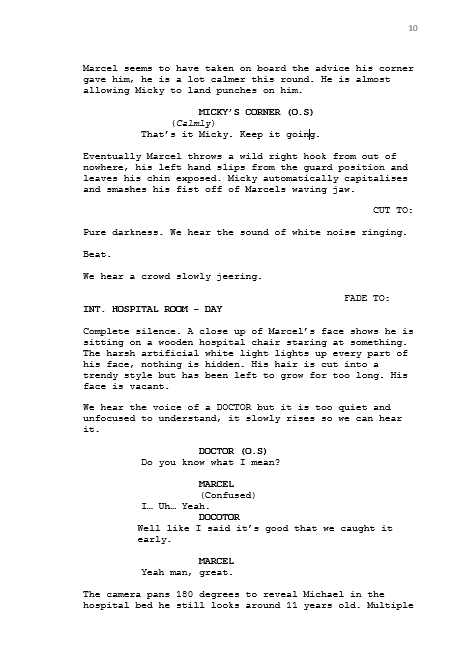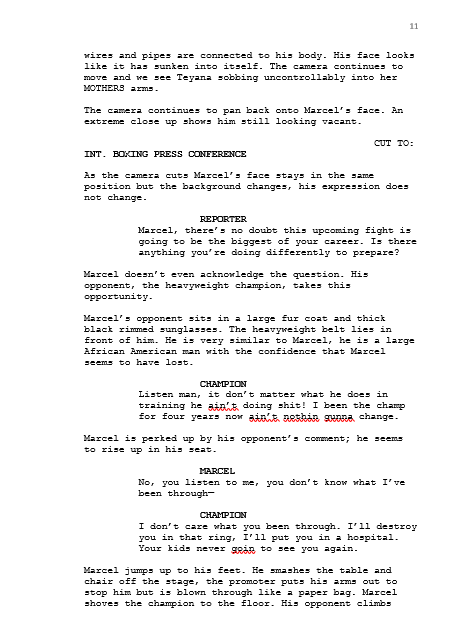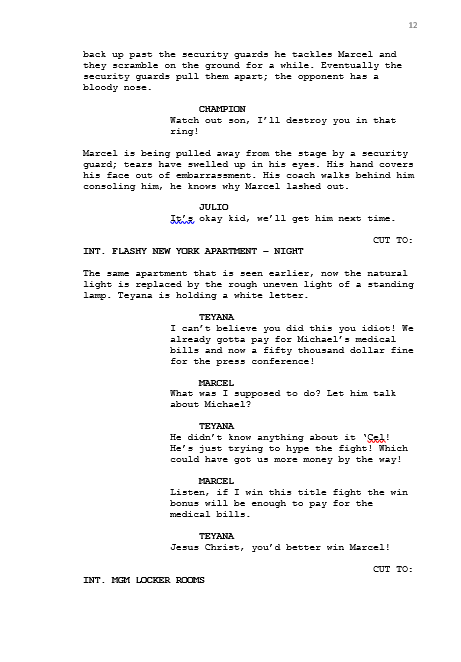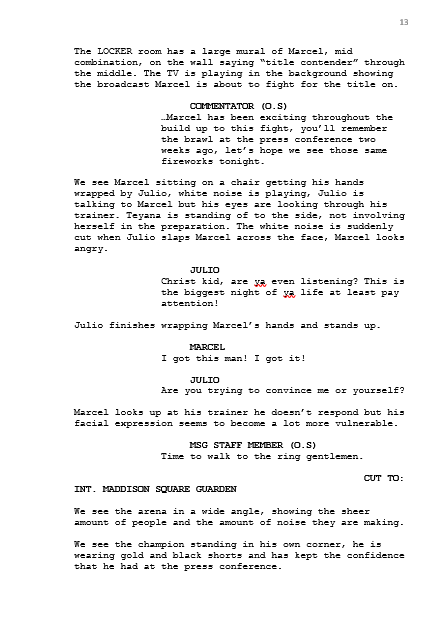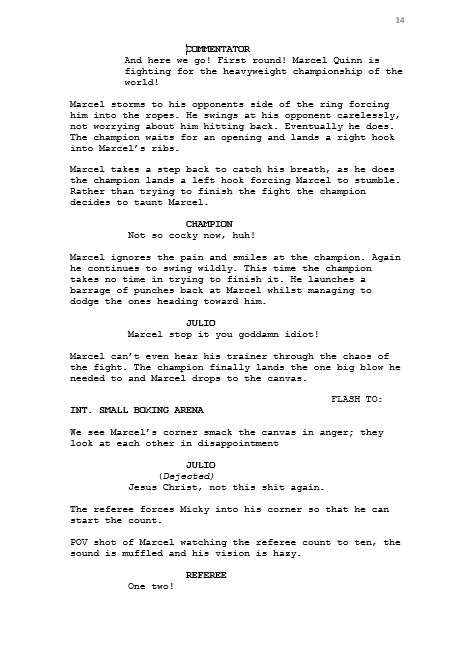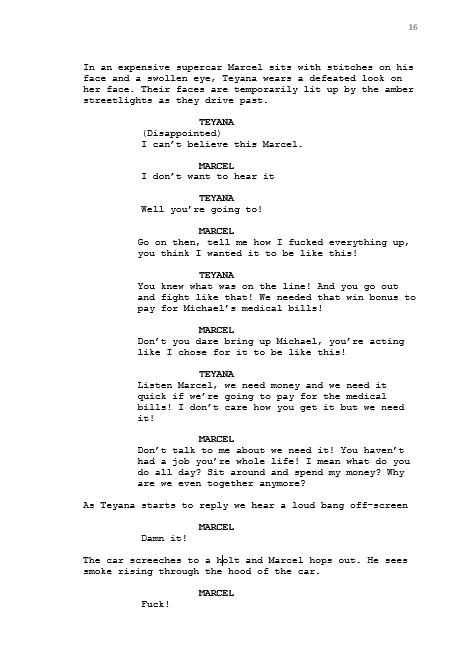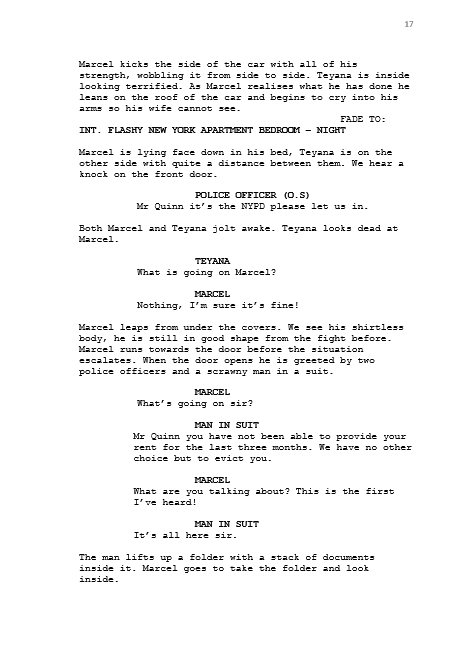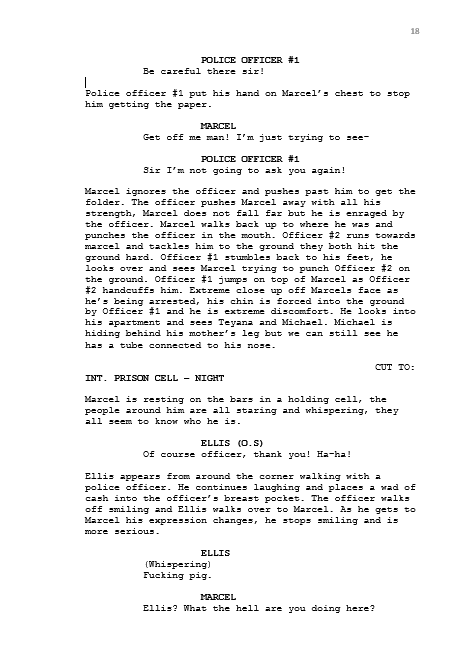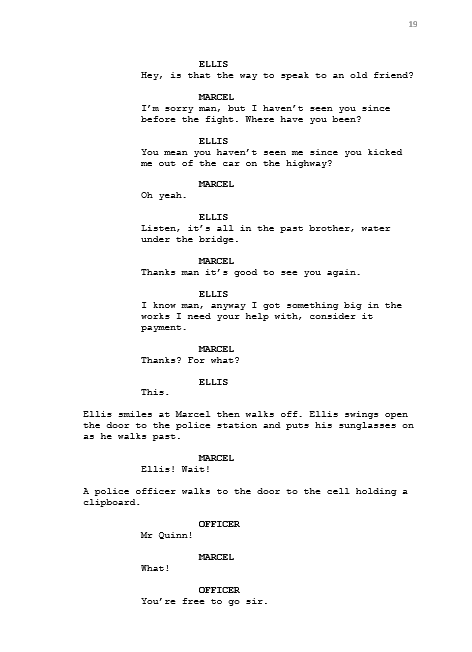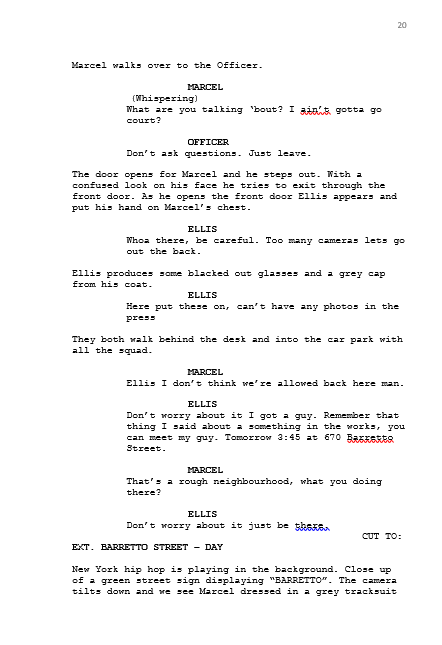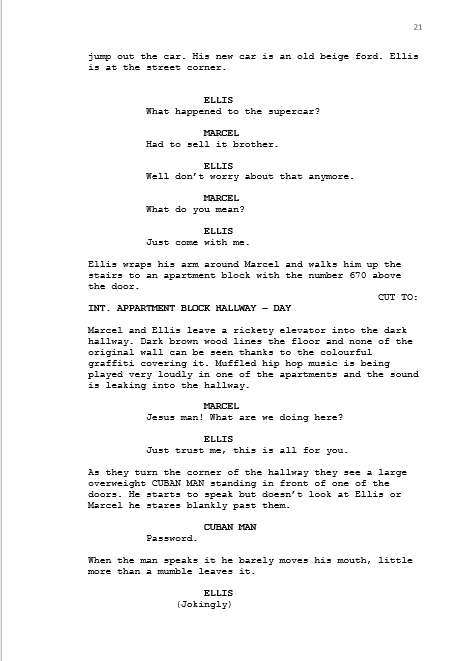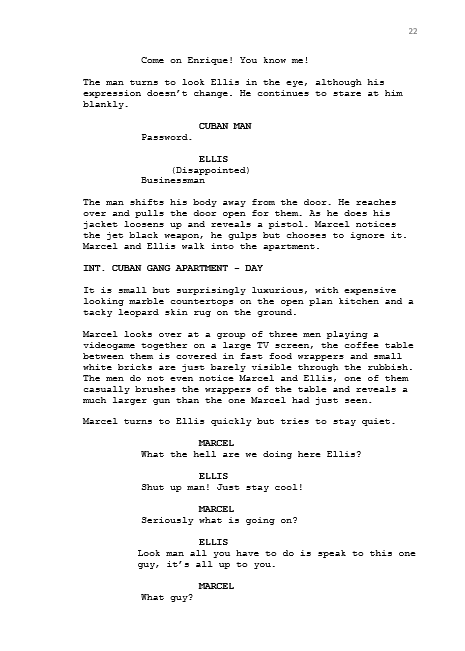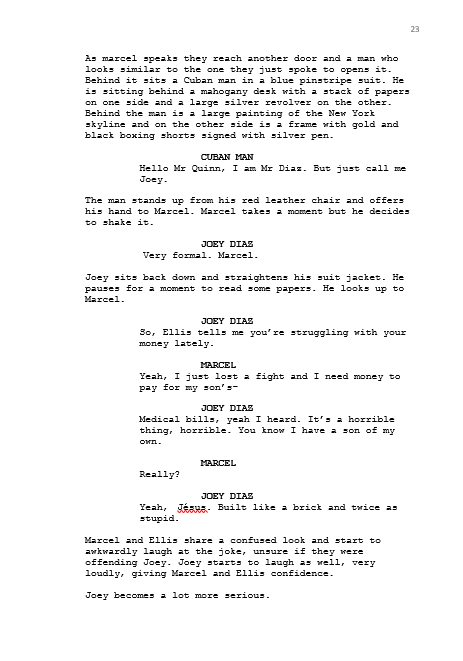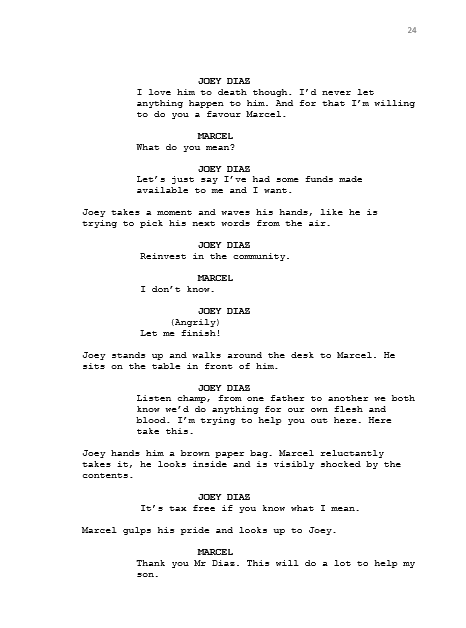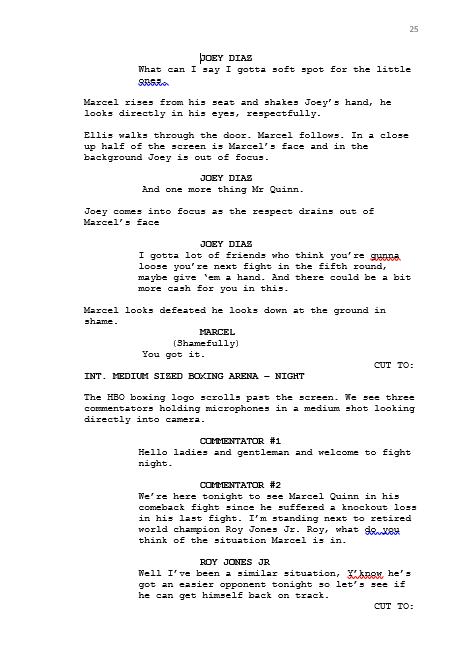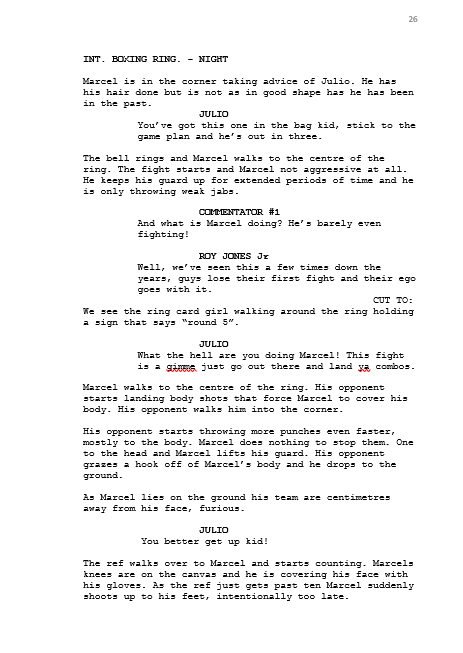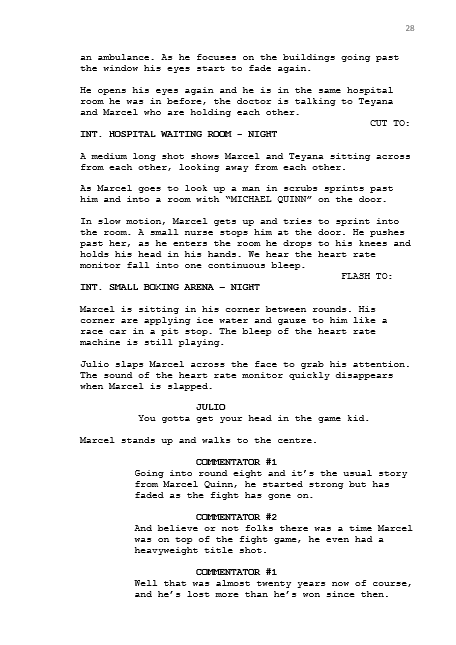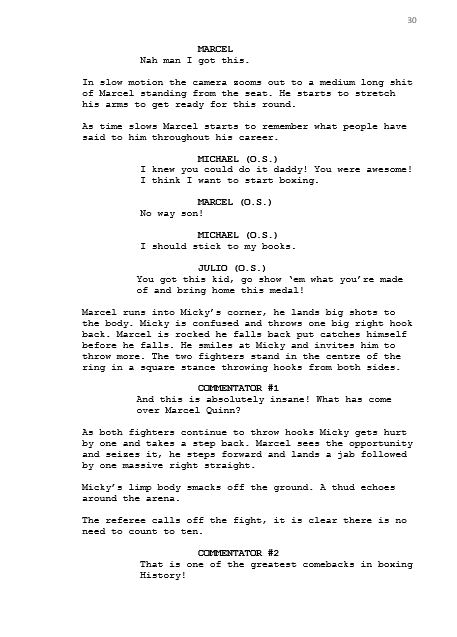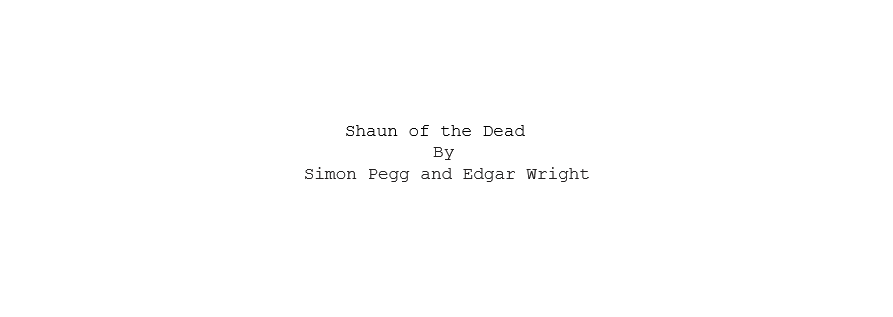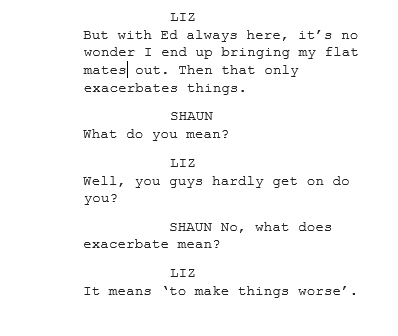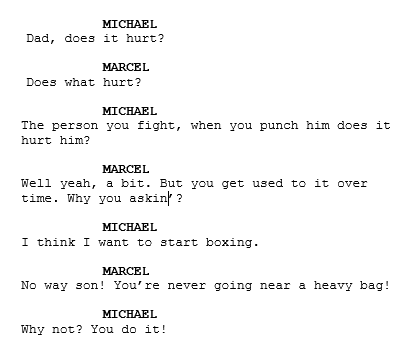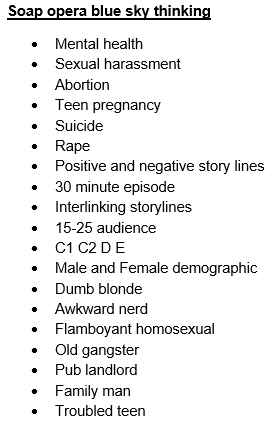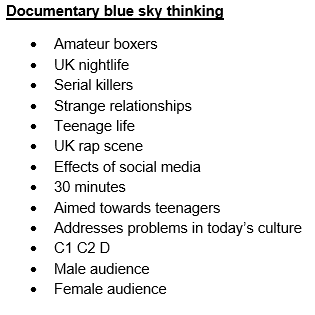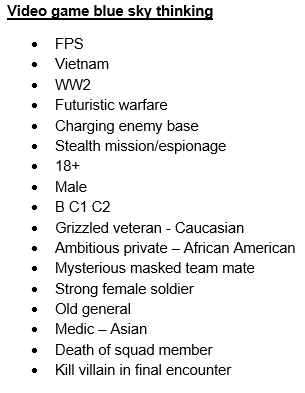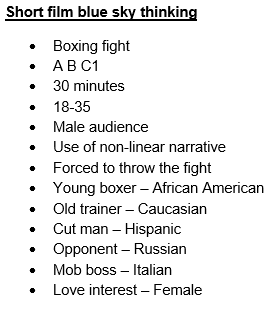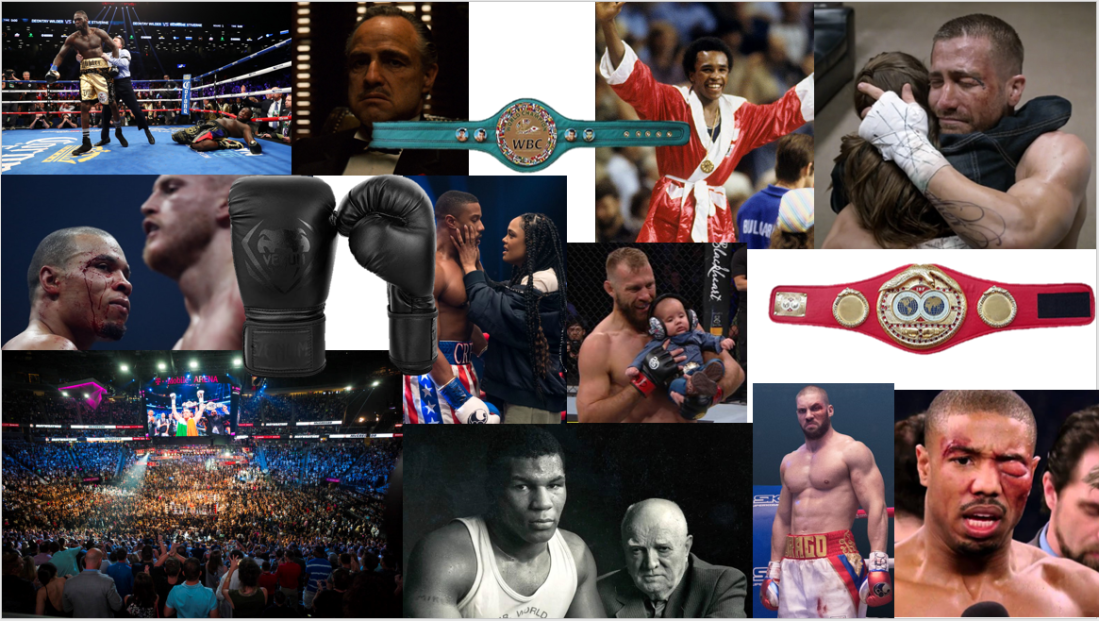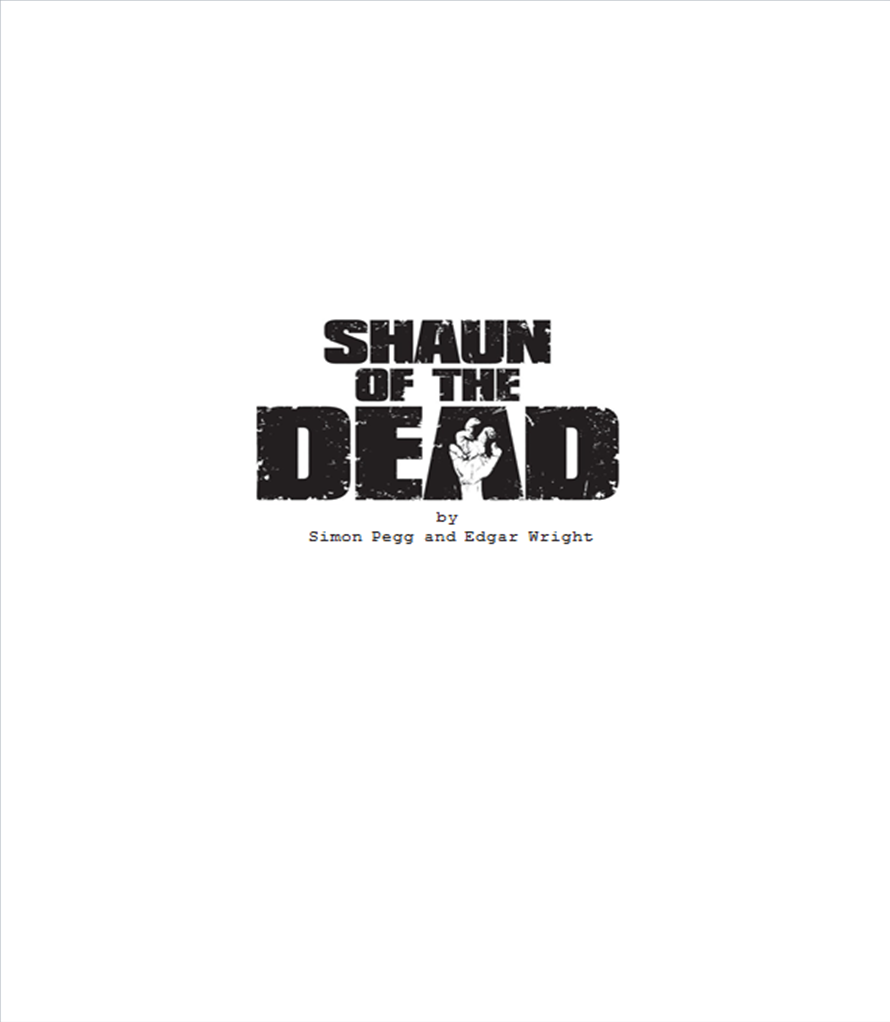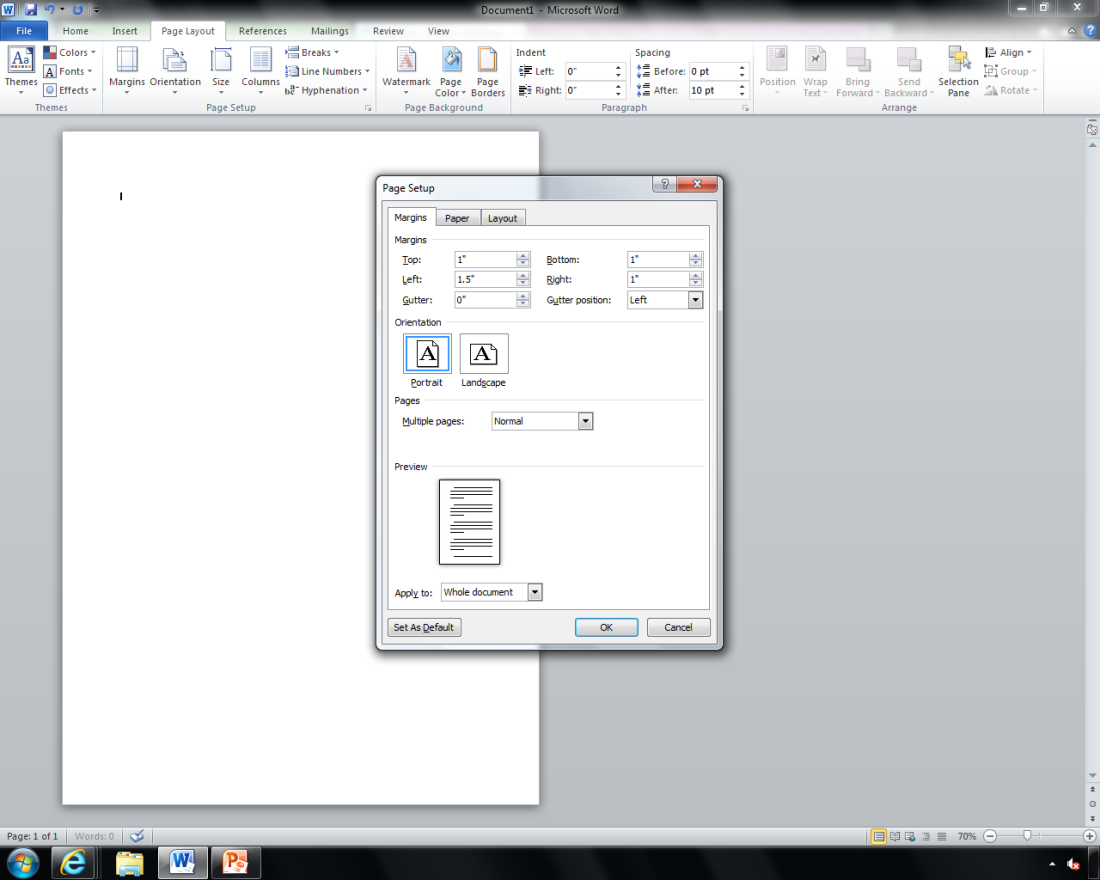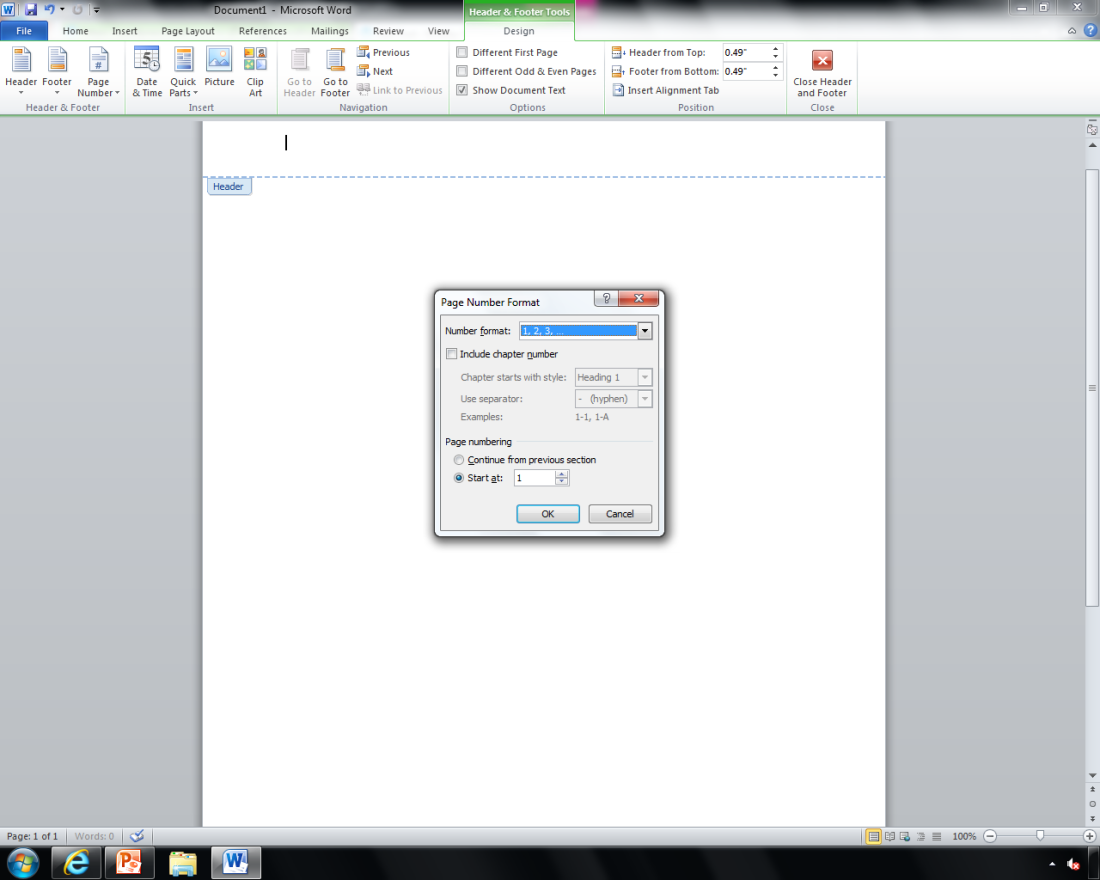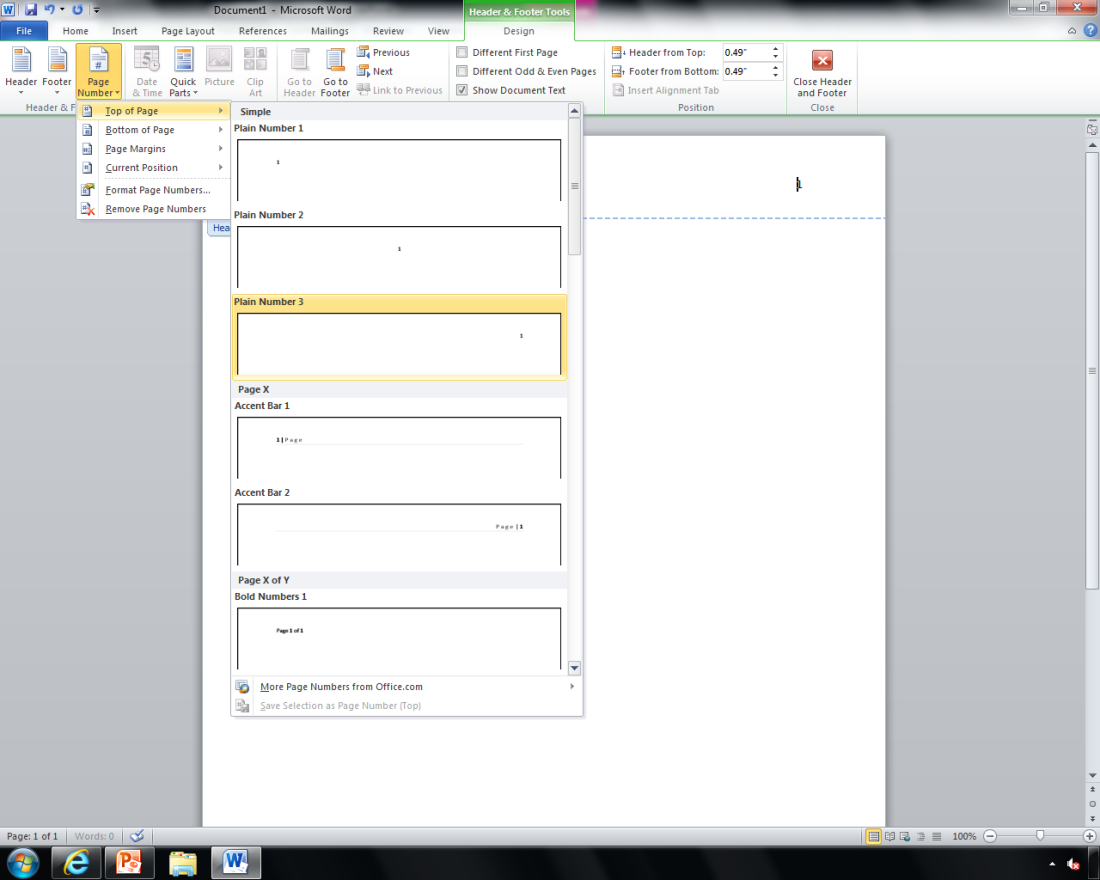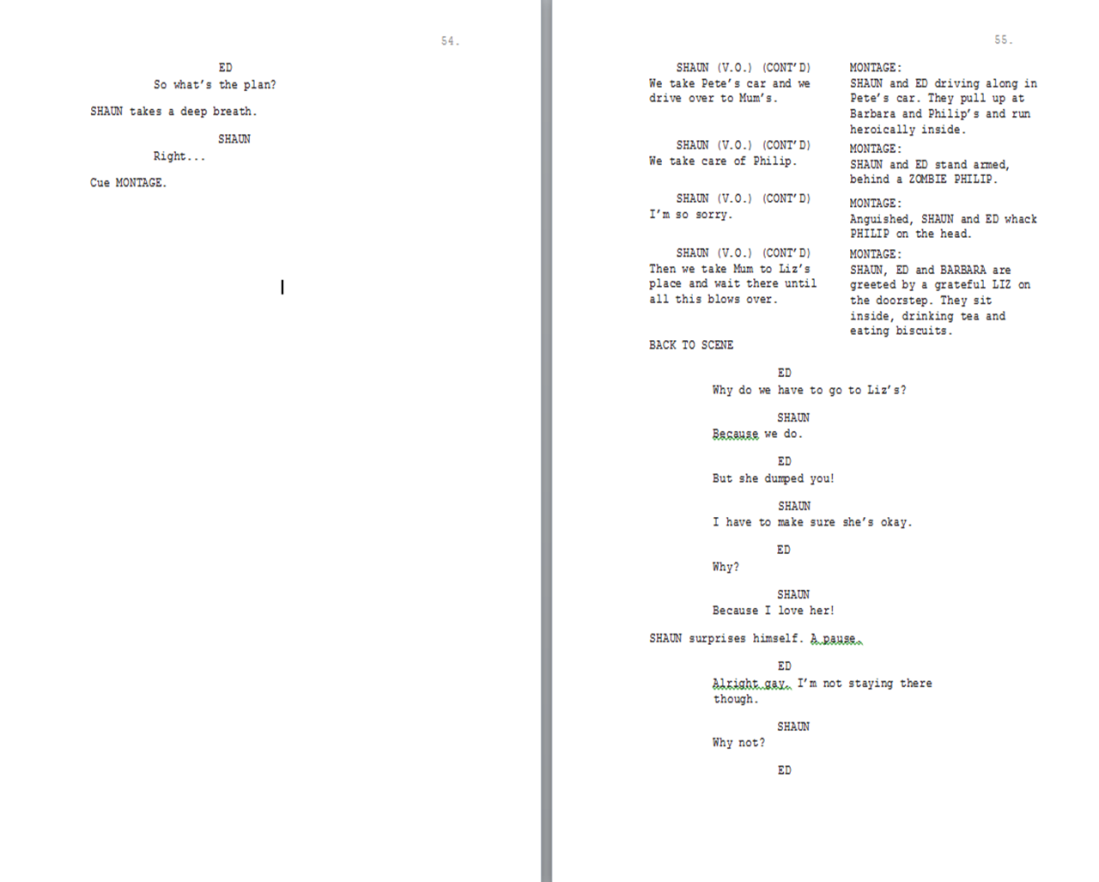It is important to research and understand the structure and conventions of scripts, in different medias, before I start planning an idea for my own script.
1.1
I need to show an understanding of what to look for when analysing a script. This will help me understand the conventions of the genre I want to work in.
Language
Elaborated code – A formal style of language, that is verbally flexible. All details are explicit. It targets a general, non-specific audience.
Restricted code – An informal style of language where context is assumed and concepts are rarely explained. Makes heavy use of gestures and facial expressions.
Mode of address – Different types of ways to speak to the audience that all create different relationship with the viewer.
Parenthetical – An instruction in the script that tells the actor how a line should be delivered e.g. “angry”, “jokingly”.
Format and layout
Mise en scene – Everything you see in the frame, e.g. lighting, props, framing, sound etc.
Pagination – The amount of pages in the script.
Three act script
Act I: Major characters introduced, establishing genre, present hook, inciting incident.
Act II: The longest, creation of subplots, foreshadow ending, midpoint of script, catapult story to third act.
Act III: Shortest part, main character comes face to face with villain, fulfils a promise made in the first act.
Angle
What point of view you take on the issue you are presenting.
Style
Exposition – Giving the audience information about the characters or the world they live in that happened before the movie started.
Linear – All scenes are placed in chronological order.
Non-Linear – Narrative jumps around in time, using flashbacks, flash-forwards etc.
Single-stranded – Follows one story the entire narrative.
Multi-stranded – Splits of into different smaller stories that all tie in to the same ending.
Type
Fiction – All events are staged and planned before hand.
Non-Fiction – Everything seen or described is a real event that took place.
Genre – The codes and conventions of a product categorise it into a group of other similar products.
1.2
Film
UK film
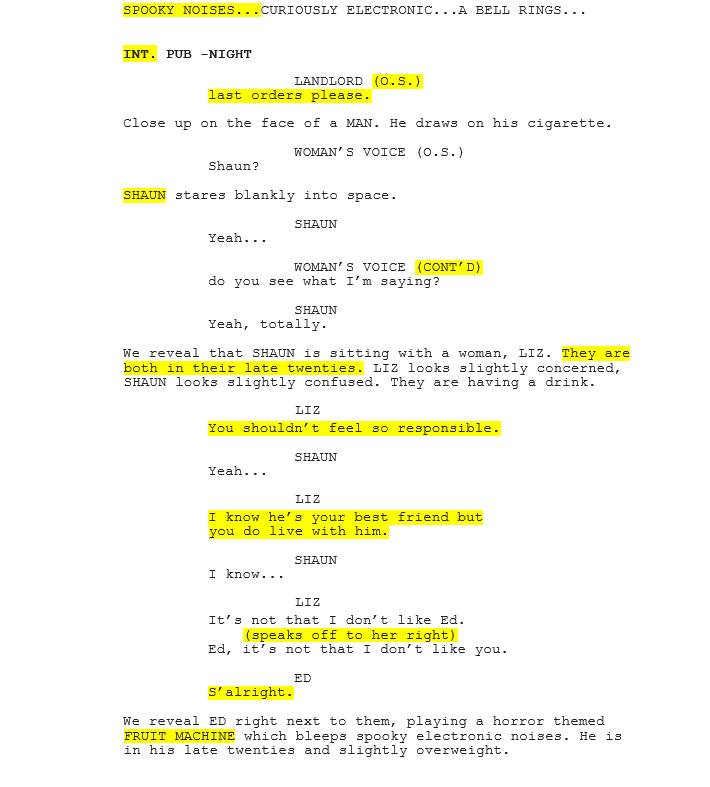
This script is following a single stranded, linear narrative. The phrase “SPOOKY NOISES” is a key moment in the stage direction and is capitalised to show it’s importance. “INT” shows that the scene is taking place indoors and tells the crew that a set is needed. “O.S” stands for off screen this may show that an actor is not needed for that part. The script uses the courier font at 12pt, this fits the industry standard and means every page translate to roughly a minute of screen time. “SHAUN” is capitalised as it is the introduction of a new character. Liz uses an elaborated code to show she is intelligent, this is contrasted with the character ED and he is restricted code “S’alright”. The script shows the way Liz should move with (She looks of to the right). The “FRUIT MACHINE” is capitalised as it is the introduction of a key prop.
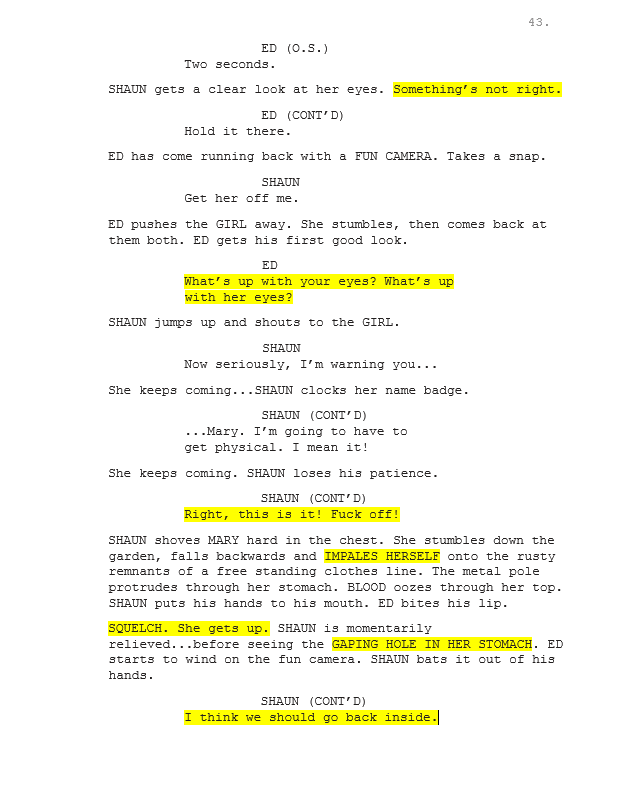
This is the start of act II, it contains the inciting incident. It shows the two main characters seeing their first zombie and fighting her off. The scene starts with restricted code to show the two characters relaxed and joking but at the end it is used to show their fear and anger.
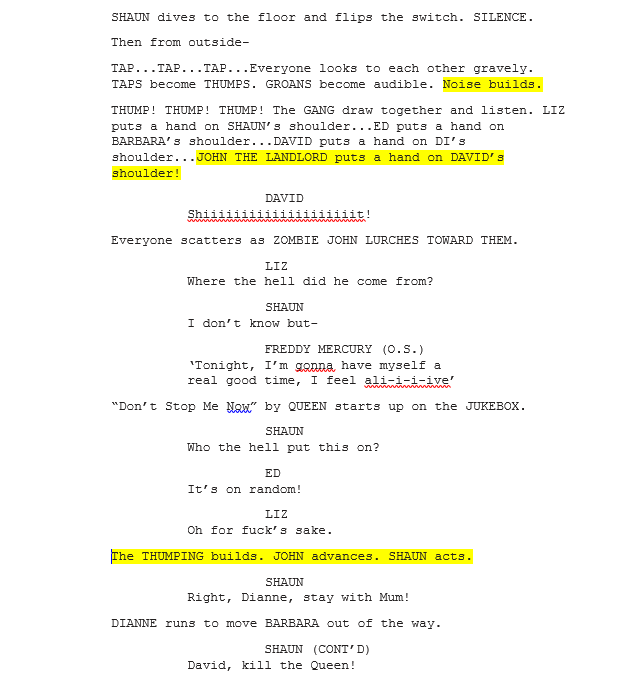
This is the start of act III, it is the final confrontation with the main antagonists of the story. Later we see the resolution of the conflict when the zombies are defeated and two of the main characters escape.
European film

The European script uses the courier font with a size of twelve, this is exactly the same as the UK script, however it only uses the courier font for the character names and location. For the rest of the text it uses times new roman. The main difference is that the European script always capitalises the name of characters, not just when they are being introduced. Another difference is that the script numbers every scene, for example this is scene 23. The European script includes a lot more detail in how the actors should perform the lines, it uses timing and internation in brackets to showcase this. This scene is early in act one as the characters are introducing themselves to each other. The script seems to be following a single stranded linear narrative. Both characters use elaborated language to convey they are new to each other and are making formal introductions.
Foreign film
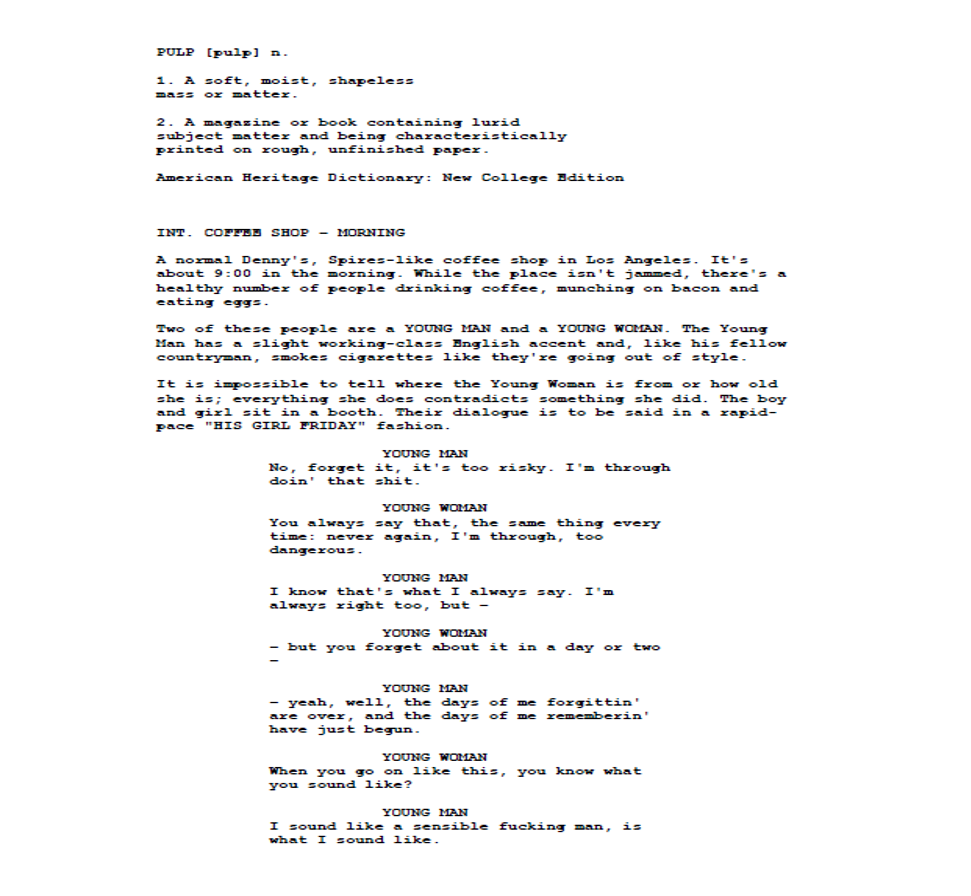
This is a script for the American fil Pulp fiction. Unlike the start of the European or British ones it starts with the definition of the title. This is to give the audience an idea of what to expect from the movie. It uses the exact same formatting as the British movie, it uses courier point 12, capitalises in the same areas and uses the same structure. The characters are using restricted code to emphasise they are criminals and are not rich people.
TV
TV drama

The TV script contains a lot more description of the characters and how they are acting, this may be because the main characters of the show are children and may need more guidance. The main characters are capitalised when they are introduced. The “CONTINUED” shows that they are finished describing the scene and are continuing from the previous dialogue. The “SIX WING MINIATURES” is capitalised as it is the introduction of a key prop. Both LUCAS and DUSTIN use restricted code which shows their age and immaturity. This is showing the first act as the characters are being introduced. This script is also following single stranded linear narrative.
Documentary

Documentary – A documentary would be different to other forms of TV shows as their is a very small amount of scripted dialogue. The only scripted elements of a documentary would be the narration. This would be scripted by splitting the narration and imagery into two separate columns so the narrator can easily follow what is happening. On the left side of the script it shows the image or video that will be seen on the screen, the right side of the screen tells the narrator what they should say, however it does not include any internation like the other scripts.
TV news
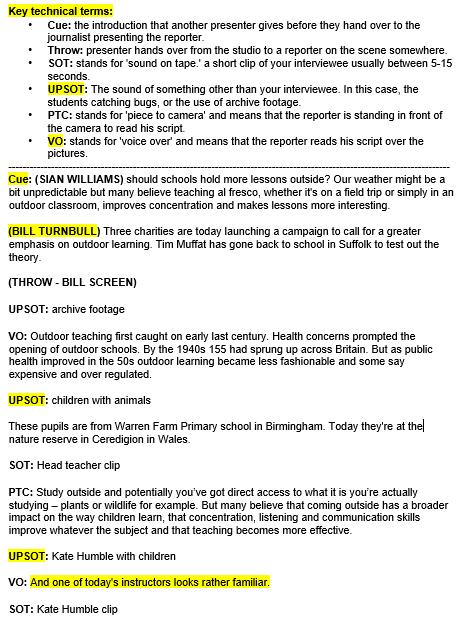
The news script does not follow conventions and use courier, instead it uses Arial, this may be because it needs to be as easy as possible for the anchors to read. It includes acronyms which are not seen in other scripts, this may be because there are many different elements in this type of broadcast like voice over or sound on tape.
TV soap
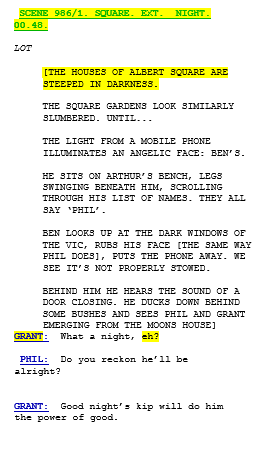
The TV soap script is extremely similar to the TV drama, as the presentation of the two genres are very similar except soaps must produce a higher amount of content. They both use the courier font in point 12 to make the script equate to roughly one minute per page. They both use a large amount of stage directions, the soap includes a lot of detail about the set, this may be to give the production team as much guidance as possible. A difference is that the soap script uses colour to differentiate meanings in different parts of the text.
Radio
Radio news
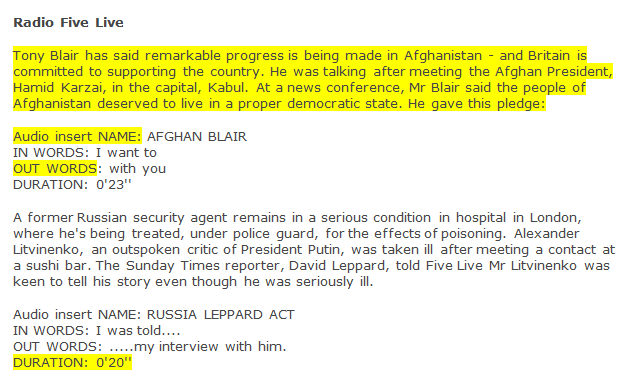
The radio news script doesn’t have the speakers name before the text, this is because in small news bulletins like this their is only one speaker so there is no need for it to show who’s turn it is to speak. The main function of the courier font it timing, this script does not use the courier font because it gives the time in seconds of how long each clip is. It also includes the “out words” of each clip so that the speaker knows when the clip has ended and it is their turn to speak.
Current affairs

The radio current affairs show is similar to the the radio news, it does not used courier, however it does not show how long each segment should last. Unlike the radio news it does have the speakers name above the text, this is because there is more than one person speaking.
Radio drama

The radio drama is structured very differently from the TV and movie scripts, as there is no visual imagery their is almost no scene direction, if there are scene directions then they are only there to indicate that a sound must be played. As there is no scene direction their is a lot more dialogue per page meaning it would probably be more than a minute per page, despite this they still use courier pt. 12.
Computer Games

Despite a different form the video game script still uses courier pt. 12. There is no evidence of internation, this may be because the primary function of a video game is not to tell a story so the script may not have had as much time spent on it as other features of a game. There is a fair amount of stage direction this may be to give the animation team detailed descriptions on what they should be working on.

